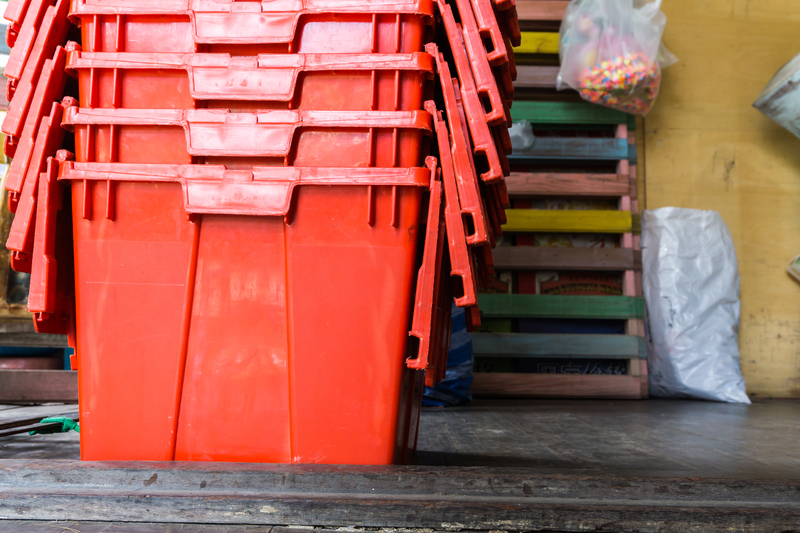Why Your Piano Deserves Professional Handling During a Move
When it comes to moving a piano, the stakes are considerably higher than with ordinary furniture or household items. A piano isn't just a piece of heavy decor -- it's a cherished instrument, a center of creativity, and often a family heirloom. If you're relocating, professional piano moving services are not a luxury, but a necessity. In this comprehensive guide, we'll explore why your piano deserves expert care, the risks of DIY moving, and tips for finding specialized movers equipped for the job.

Understanding the Unique Complexity of Piano Moving
The Anatomy of a Piano: More Than Meets the Eye
Pianos are marvels of engineering. Inside, they comprise thousands of delicate parts, including strings, hammers, pedals, and a sensitive soundboard, all meticulously calibrated for optimal performance. Whether you own an upright or a grand piano, the unique design and fragile components are highly susceptible to damage during a move.
- Weight: Upright pianos often weigh between 300-500 lbs, while grand pianos can exceed 1,200 lbs.
- Shape & Size: Grand pianos can reach lengths of up to 9 feet, requiring specialized equipment to maneuver through doors and tight spaces.
- Balanced Mechanisms: The internal tension of piano strings totals up to 20 tons of pressure!
- Surface Finish: The fine lacquer or wood finish is easily scratched or dented during improper handling.
Why DIY Moves Put Your Piano at Risk
It's tempting to gather a few friends, rent a truck, and try to move a piano yourself. However, the risks are manifold and the consequences can be catastrophic:
- Injury Risk: Without proper lifting techniques and equipment, moving a piano can cause serious harm, including back injuries or crushed fingers.
- Piano Damage: Dropping or mishandling even the smallest piano can damage the soundboard, strings, or legs, leading to expensive repairs.
- Property Damage: Pianos can easily scratch floors, damage door frames, dent walls, or chip stairs if not transported correctly.
- Tuning and Regulation: Improper moving may knock the piano out of tune or disturb the internal mechanisms, impacting sound quality.
Highlight: Attempting to move a piano without expertise can permanently affect its tone, performance, and appearance.
The Benefits of Professional Piano Mover Services
Specialized Equipment & Techniques
- Piano Dollies & Straps: Experts use padded dollies designed for piano weight, reducing shock and "jostling."
- Skid Boards and Crate Protection: For stairs and tight spaces, professionals use skid boards, slings, and sometimes custom crates to ensure safe passage.
- Climate-Controlled Trucks: Piano moving companies know how sensitive instruments are to humidity and temperature. Trucks are often equipped to maintain stable conditions.
- Disassembly & Reassembly: Grand piano movers expertly remove and reattach legs, lyres, and pedals as needed.
Experienced Hands: The Greatest Asset
The most crucial advantage is human expertise. Professional piano movers have years of experience navigating stairs, lifts, narrow hallways, and inclement weather. They understand piano anatomy and protective techniques, significantly reducing risks.
- Assessment: Pros assess obstacles in both departing and arriving locations.
- Protection: Instruments are swaddled in thick blankets and shrink wrap to prevent impacts or scratches.
- Team Coordination: Moves are orchestrated with precise communication and teamwork.
Insurance and Peace of Mind
Most reputable piano movers offer comprehensive insurance that protects your instrument from accidental damage during the move. In contrast, most homeowner's insurance policies do not cover damage occurring during transit, especially if movers are not professionally licensed.
Peace of mind comes from knowing your instrument -- whether a concert grand or upright -- is fully protected.
Common Myths About Piano Moving
Myth #1: "A Few Strong People Can Move My Piano"
Fact: While it's possible for several people to physically lift a piano, lacking expertise in weight distribution and maneuvering can result in injury or damage. Strength is not a substitute for experience.
Myth #2: "All Movers Can Move Pianos"
Fact: Standard moving companies may not have the equipment, training, or insurance required for sensitive musical instruments. Only specialized piano movers provide the proper care.
Myth #3: "Local Moves Don't Require Professionals"
Fact: Whether you're moving across the street or across the country, all the hazards of piano transport remain. Protect your investment by hiring experts, regardless of distance.
How Professionals Safeguard Your Piano
1. Pre-Move Assessment
Movers perform a walk-through to identify exit paths, access points, elevator sizes, and obstacles. They consider your piano's make, model, and finish before planning its secure transport.
2. Protective Wrapping
High-quality moving blankets, foam padding, and plastic wrap shield your piano from scratches or dings during handling. Delicate parts such as pedals, keyboards, and the music rack receive extra care.
3. Disassembly (When Necessary)
For grand pianos, experts carefully remove legs and pedals, labeling each part for reassembly at your new address. Uprights are secured and stabilized in their entirety.
4. Loading & Transport
Special dollies and ramps prevent bouncing and jostling. Instruments are secured inside trucks using webbing and even temperature monitoring, if needed.
5. Unloading & Reassembly
At your new residence, movers reassemble, place, and position the piano to your instruction, ensuring it's level and secure.
The Cost of Cutting Corners: Real-Life Risks
- Broken Strings and Tuning Pins: Mishandling can loosen or snap piano strings, which are costly to repair.
- Soundboard Cracks: A dropped or bumped piano risks cracks to the soundboard -- the "heart" of your piano's tone, sometimes resulting in irreparable damage.
- Cosmetic Damages: Scuffed finishes, chipped keys, and broken legs or pedals detract from both value and beauty.
- Personal Injury: Musculoskeletal injuries, back problems, and even hospital visits are far too common among amateur movers.
Ultimately, choosing unqualified movers or DIY methods is a gamble few pianists are willing to make.
How to Choose the Right Piano Movers
Key Questions to Ask
- Are you insured for instrument-specific damages?
- What equipment do you use for moving pianos?
- How many years of experience do you have moving grand/upright pianos?
- Can you provide references from satisfied customers?
- Do you offer climate-controlled transport if necessary?
Review Credentials and Certifications
Reputable professional piano moving companies are members of moving associations and are fully licensed and bonded. They employ highly-trained staff, not day laborers or sub-contractors, ensuring consistent quality and accountability.
Special Cases: Antique and High-Value Pianos
If you own a vintage Steinway or heirloom grand, many moving companies offer white-glove services for ultra-high-value or highly sentimental pieces. These may include custom crating or temperature-controlled storage during transitions.

What to Do After Your Piano is Moved
- Let the piano acclimate: Allow your instrument to adjust to the new temperature and humidity for at least a week before tuning.
- Schedule a tuning: All pianos need to be re-tuned after a move to ensure proper sound and performance.
- Inspect for damages: Check the exterior and play your piano to identify any unexpected issues.
Conclusion: Prioritize the Safety of Your Piano
In summary, your piano is much more than a piece of heavy furniture -- it is an investment, an expression of artistry, and sometimes a beloved member of the family. The cost of professional piano movers pales in comparison to the repair or replacement costs resulting from improper handling. With their specialized skills, equipment, and dedication to safe transport, professional piano movers ensure your instrument will arrive at its new home ready to delight for years to come.
Don't leave your piano's safety to chance. Choose expert piano moving services and give your instrument the handling it truly deserves during your move.